One sees a lot of artwork on a daily when working in this field, but every now and then, something sticks out. I couldn’t tell you exactly when and where I first saw the art of Gianluca Traina, but I remember how I felt – intrigued. His portrayal of humanity struck something, and I could see the honesty of it right away. These works were introspective and universal at the same time, and not at all commercial. It hence didn’t come as a surprise that the man behind them is a lovely, genuine person.
Siciliano
Gianluca Traina comes from Sicily and has a rich background in fashion and design. The influence of these studies might not be immediately apparent in his work, but when explained, it makes perfect sense. Gianluca applies the techniques of fabric construction and production to his three-dimensional pieces – only his material is paper. He gives us a panoramic look of the human being (quite literally), offers new and different points of view, and discovers layers unbeknown. I could probably stare at these for an eternity, to be honest. The way Gianluca plays with color and surfaces is simply mesmerizing.
To discuss some of his most important artwork, among which is the “Portrait 360°” project, we interviewed Gianluca for the Live in Italy Mag readers. We talk about his experiments with paper, what it means to be human today (but also what it means to be an artist), and what exciting things he has in store for us.
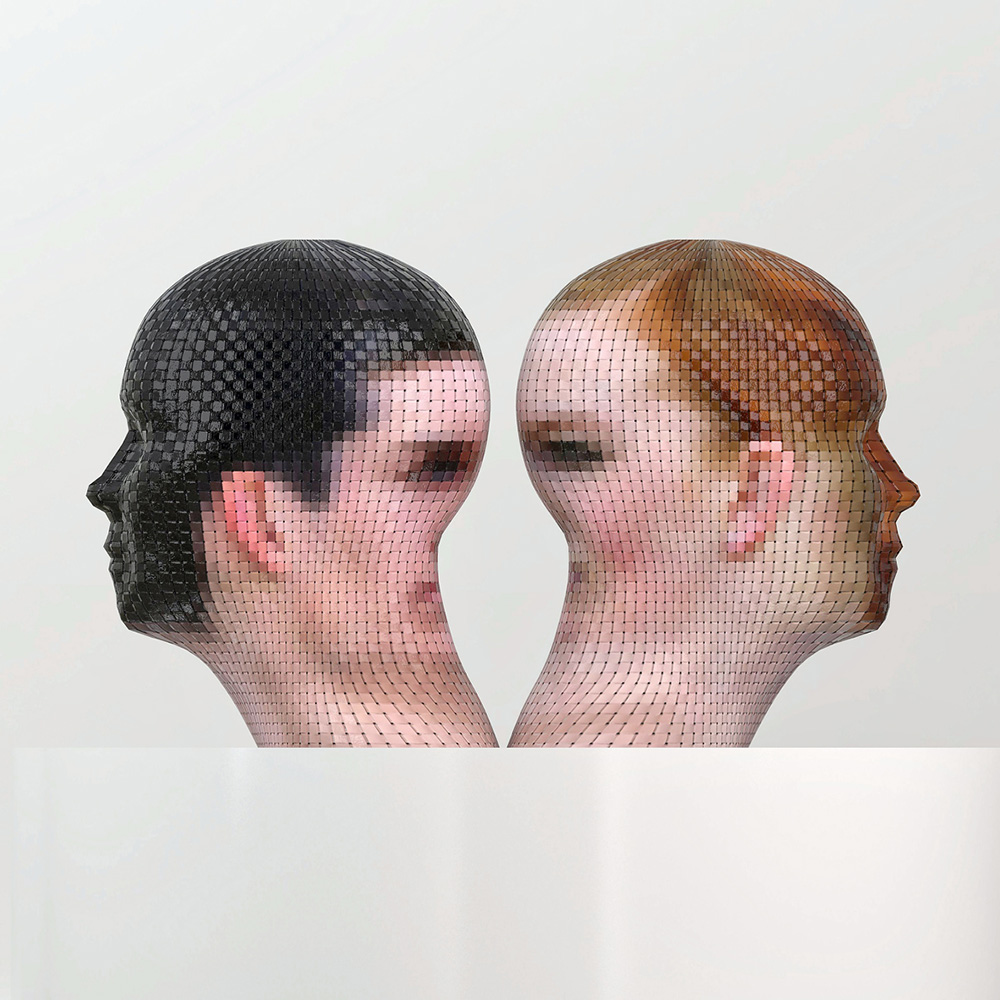
Dissecting Identity with Gianluca Traina
You have a background in fashion, and in your bio it says your studies of textile and how one constructs it helped inform your art. But what else did fashion give you in your career? Have your views of it changed since you studied it?
Dressing the body, covering it, modifying it through forms, and even textile, still interests me today. I continue to follow the fashion shows, the stylists, the trends. Nowadays, I find it more fascinating to discover the body, to tell it in its naturalness, as a biological entity and a living species. In exchange, I always look for a standard, a seriality, the possibility that my creation can be reproduced identical, over and over again.
This is typical of fashion and design. This is the legacy that I carry with me, having studied fashion and design, but above all empathy and connection with the human body. After all, fashion does nothing but transform two-dimensional surfaces such as fabrics into three-dimensional objects such as an item of clothing. The process is analogous to my way of creating sculptures.
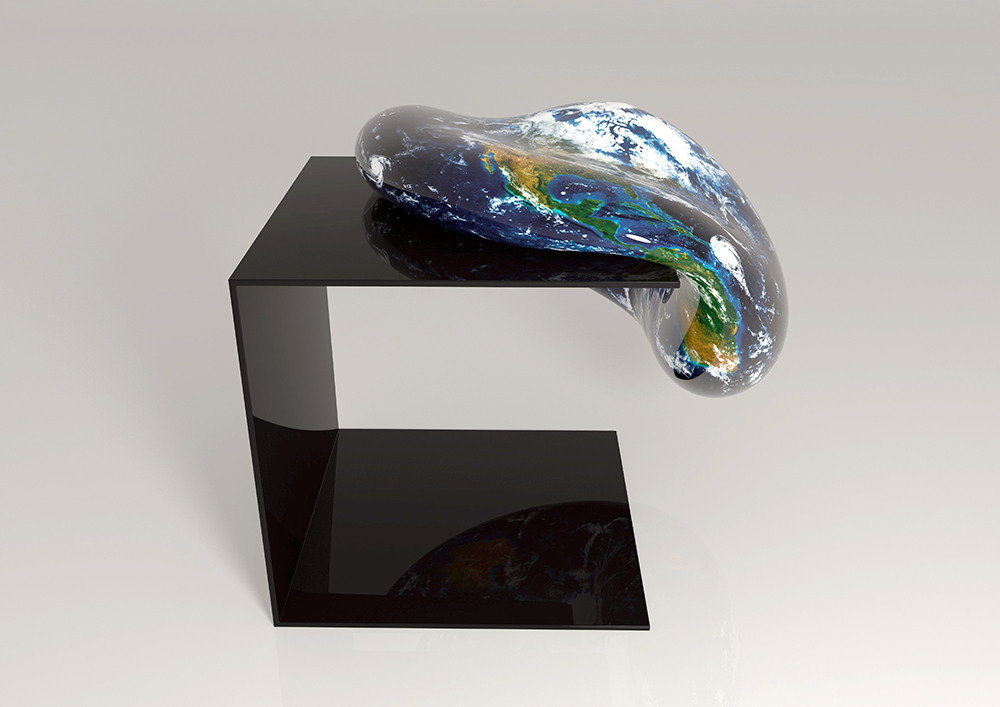
A lot of art today deals with the concepts and ideas of identity, human body, and how they intersect. How do you see your art fit into this narrative? What do you want the audience to take with them after seeing your work?
I am often oriented towards a homogenized, descriptive, factual representation of the body. I always try to blur the line between genders and races. Standardizing a form, as in the case of “Portrait 360º”, allowed me to unify the genre and play only on the identities represented, in that case, by the textures of faces or places.
I apply unusual rotations to these textures because I want to highlight the impossibility of the observer to fully perceive the content of an individual simply from his exterior.
Real Life for Me
This is real life for me. I have always received comments on my exterior, criticisms or real verbal attacks, and not because I had changed anything about myself but just because I had that face. I understood very soon the superficiality of the judgment and how incapable human beings were to take care of the sensitivities of others.
Unconsciously from this inner “trauma” came the desire to tell [of] this disconnection between the exterior and the interior and an individual’s inability to perceive it.
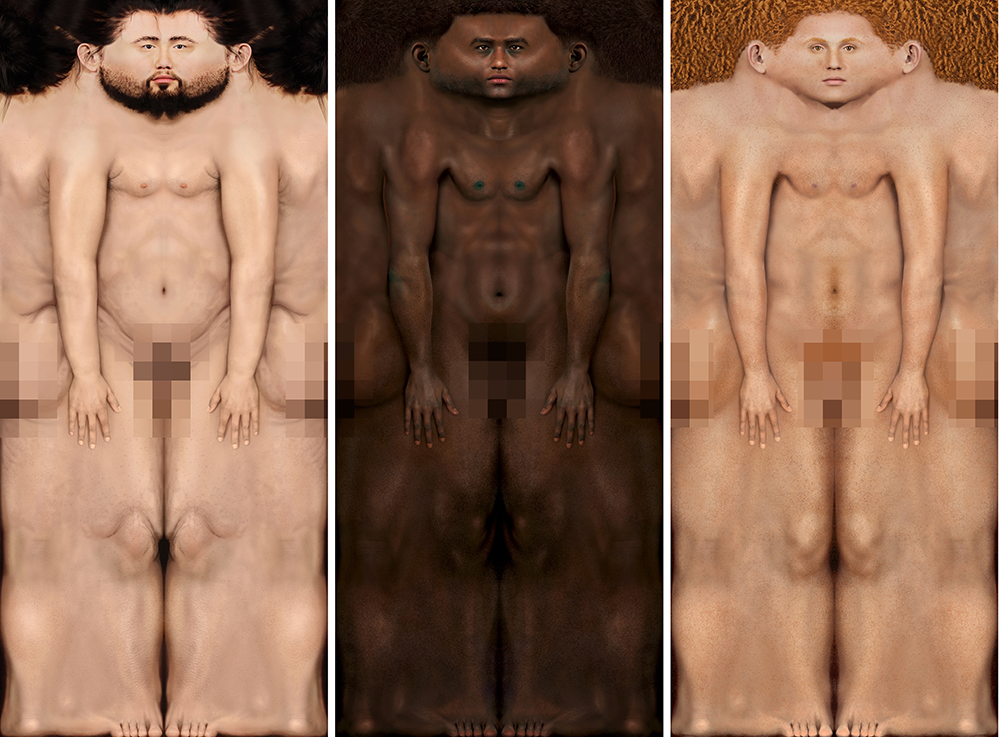
Have you yet found an answer to the question: what is the contemporary human being?
This is an issue that I consider, but marginally. When we lived in a territorial, Eurocentric or America-centric culture, it made sense to seek the answer. Now, it is almost impossible to draw an objective and credible profile on who or what the contemporary human being is, because we are globalized and connected.
What the contemporary human being is for me is quite another matter.
- We are increasingly electronic and digital entities, less beings or individuals.
- We move and are stimulated as groups or reference targets.
- We are increasingly classified into categories and classifications.
The direction that contemporary man has taken is that of renouncing his own individuality, developing new and at the same time dangerous community values.
Making Paper Go 360°
Can you tell us more about your interest in paper and its physical characteristics? Your projects “Mosaic 360°” and “Portrait 360°” seem to rely heavily on this material. Does paper’s own precarity come into play as well?
Paper is an apparently fragile material. In reality, if treated, it becomes a support used to create infinite things. It is the first material that I started experimenting [with] as a child.
In my sculptures, paper is the material that allows me to create the internal structure. It undergoes a hot lamination process with adhesive PVC [that] gives it stability and durability, but it is necessary to also give it the chromatic characteristics that make up my work. Before going back to paper or testing other materials like hides or leather, none met my needs, so I opted for paper.
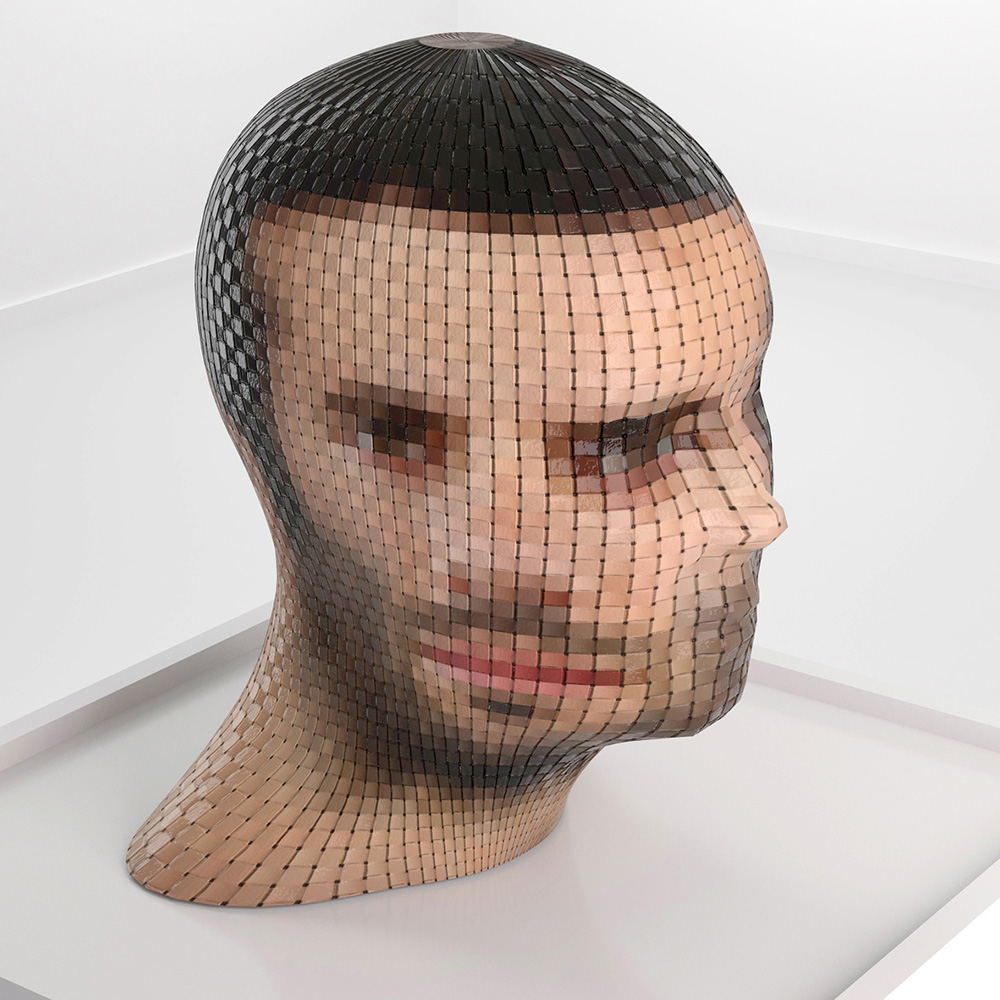
What has going from 2D to 3D meant to you, both conceptually and physically? What kind of possibilities opened up in the ways you work?
I studied modeling for clothing and in this area each item of clothing is conceived and designed as a 2D geometry which, after being sewn, becomes a wearable 3D garment. I also studied weaving and knitting, so in my background there’s a lot of affinity with this transition from 2D to 3D.
The real turning point came while observing the Egyptian mummies’ bandaging system. They inspired me to pursue the search for the adaptation of two-dimensional surfaces that harmoniously followed the organic forms of the human body. I have developed my own process, which is the communion between the techniques of modeling, weaving and the Egyptian bandage. Knowing the 3D modeling programs and the Cad language has made it possible to transform an idea into reality.
Your “Made in China” body of work is obviously inspired by the country, its culture, and your stay there. How would you say Italy informs your work (if at all)?
In my work, there are many affinities with oriental culture, attention to detail, craftsmanship skills. These affinities are also present in Italian culture, in Made in Italy. It’s difficult for me to draw boundaries or identify a limit. By now, everything became so hybrid in my mind that I operate automatically and naturally.
In the first works of the “Portrait 360⁰” series, I treated human faces as pixellated textures, which in my Italian spirit recall Byzantine mosaics. In my region, Sicily, there are many important testimonies of these. The sensitivity for design and production processes is another characteristic that I always tend to consider when I create.
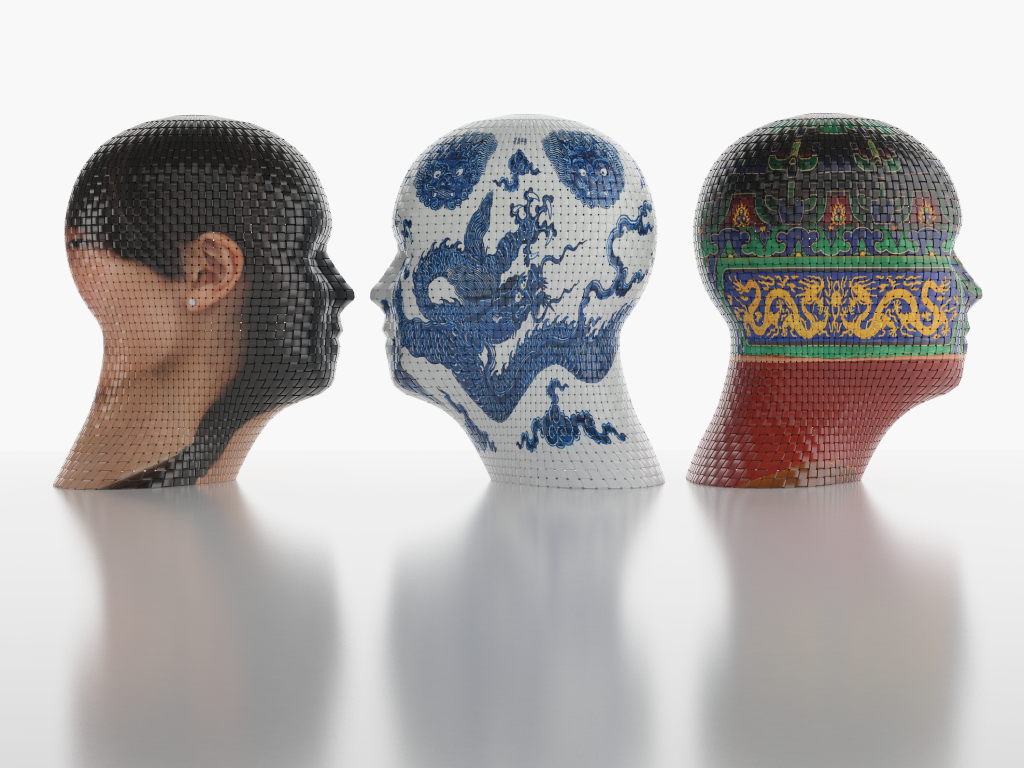
To Be An Artist
What does it mean, for you, to be an artist in this day and age?
Today, being an artist means opening one’s sensitivity to sharing, giving up a bit of one’s interiority in favor of a possible story with which a potential interlocutor can receive a contribution, of any nature, cultural, artistic, educational, political – it doesn’t matter, as long as there is an interaction between the work or done and the observer.
Art has come out of the institutional venues and can be manifested and exhibited in infinite ways. I believe we must be ready for any type of change and adapt to the contemporary communication system. This was the case for our predecessors, this is the same for us artists operating in this era.
We admire the ways you do your own promotion, and the work you put into it. How challenging is that journey?
I am convinced that sharing one’s knowledge, one’s creativity, is a great way for an artist to stay in touch with one’s audience without being intermediated by the venue in which one exhibits or by the context, because in some way it exposes you to criticism or judgment in direct and unfiltered way. It often conditions, but also introduces, aspects that can only improve one’s work or how it can be told.
In my case, the work is very technical. It intrigues the observer regardless of its artistic content or how good I am at narrating or promoting it.
Your Instagram tells us you’ve got a good sense of humor! Have you thought about incorporating some of it more boldly in your work as well?
I never remember being an artist, it’s not part of my daily life to be one. Most of my life, I’ve been a loner who uses his sympathy and irony to interact with people. I have never taken myself too seriously, both professionally and personally.
It is difficult to transport some humorous attitudes into the art world without risking being banal or too critical, without falling into the obvious. I would like to have the opportunity to play more with the content of my works, to use a language that dares but can still convey something to the observer. This has not happened yet, with the exception of some of my pictorial works.
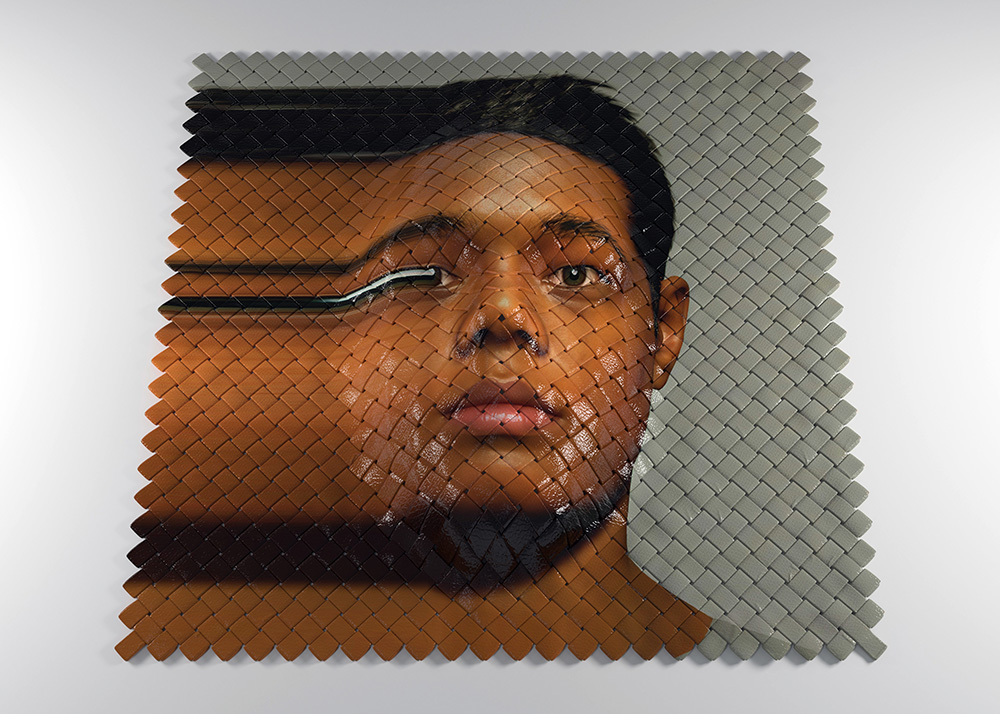
Looking Towards the Future
What’s something that is on your bucket list, art-wise? Is there anything you’d like to do when it comes to art-making? Materials you’d like to explore? Processes you’d wish to learn?
I would like to be able to work more on relational processes, use technology to make my works interactive and susceptible to changes related to interaction with the observer. There is already a lot of technology in my creative process, but it is applied, therefore useful for the creation of the works.
Instead, I would like to use technology to give my works conceptual and visual changes independent of its appearance. In the last two years, I have studied programming languages, codes, interaction through devices and sensors. I took courses in electronic art, and I am experimenting through generative art.
This is the road that doesn’t let me sleep at night, the path that I’m deepening. At the same time, I’m testing the new 3D printing methods and laser cutting. I’m almost sure that I will find a balance between these interests of mine and a new project will be born.
What’s next for you?
I created a man-machine interface, a device that uses electrical sensors to detect biodata of the human body which it then processes and transforms into sequences of lines, shapes and colours. With this project I am concerned with how to use technology by hacking its use to generate art. I’m questioning myself about the authorship values of the work and I’m thinking about the misunderstanding of the authorship of the process. Is the artist the one who created the code, the body that supplies the data that generates the image, or the code that processes everything and actually creates the work?
I would like to transport this process to the plant world, to be able to give visibility to the invisible, to communicate the importance of the plant world on the planet and how, despite their silence, they are sensitive entities that produce electricity and have an invisible world that does not interface with ours.
I would love to be able to be an aesthetic bridge between the plant and human world. It is a process in full evolution, but it is what is closest to my heart at the moment. We must reach a new sensitivity as a species and art can help to understand some processes.
All images courtesy the artist.


Oggi l’artista non è solo chi opera con pensiero e azione. Gianluca va oltre e cerca la sua collocazione nella realtà contemporanea. Così il suo contributo va oltre la sfera dell’artisticità per entrare nel dibattito contemporaneo, quello che coniuga unicità e collettività, creatività e tecnica, autenticità e sovrastruttura ecc. Bravo.